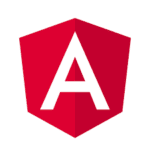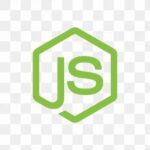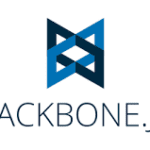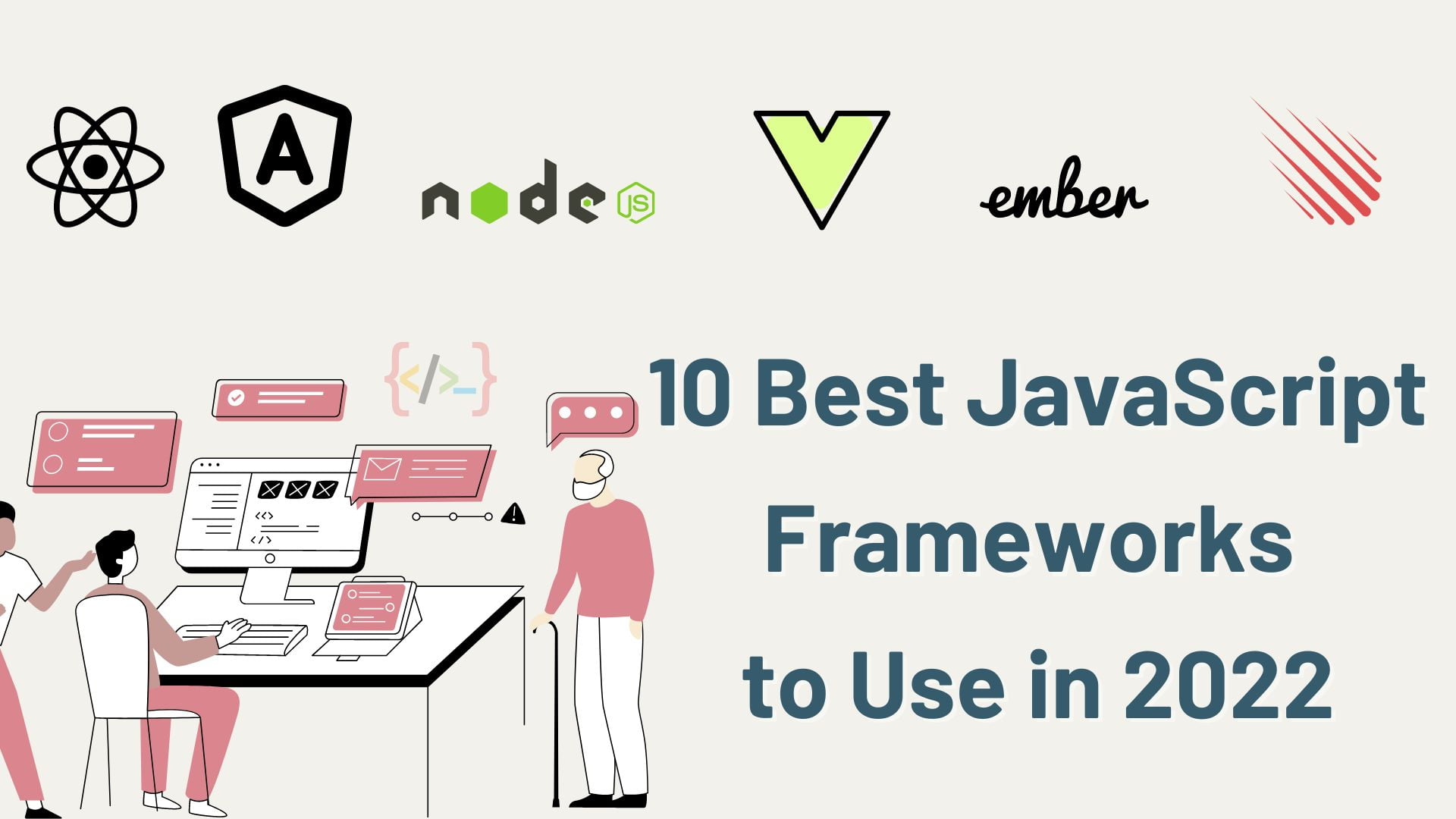JavaScript frameworks have evolved greatly since their inception in the 1980s and 1990s. They are one of the key parts of a platform’s ecosystem, and they constitute the visible surface of a programming language on which to build applications.
Computer programs written with frameworks can be common utility tools or business logic emulators, as well as reusable blocks that serve as building blocks for each other.
In the past year, the JavaScript Framework market has taken off, with establishment frameworks like React dominating Google’s TIOBE Index. However, there are many new front-runners about to enter the arena of best JS frameworks for 2022, making it difficult for developers to decide which framework is best.
If you’re confused about your options, this blog post highlights ten of the hottest modern and upwardly mobile candidates.
JavaScript is a multi-paradigm language that supports event-driven, functional, object-oriented, and prototype-based programming styles. JavaScript was initially used only for the client-side but, in more recent times, it has also been used as a server-side programming language.
For that reason, JavaScript is considered by many to be the language of the web. It is by no means the only language present on the web, but it is popular enough that there have been a number of frameworks available.
Here, we go through the various JavaScript frameworks to use in 2022, their features, and pros and cons, among other things. But first, let’s talk about what a JavaScript framework is and some high-level questions related to the language and its frameworks. And this article will give you insight into some of the most important JavaScript Frameworks for 2022.
1. Angular

Angular is one of the most popular JavaScript frameworks. It is used by many large companies, such as Google, Netflix, and Instagram.
Angular is a very versatile framework that can be used for developing both web and mobile applications. It is easy to learn and has a large community of developers who can help you if you run into any problems.
Some of the features that make Angular stand out are its two-way data binding, which makes it easy to handle user input, and its use of dependency injection, which makes it easy to manage dependencies between different parts of your code.
Angular also has a lot of built-in directives, which can save you a lot of time when developing your applications.
[wptb id=1260]
Features
- Progressive Web Apps: Has modern web platform capabilities to deliver app-like experiences that are high performance, offline, and zero-step installation.
- Desktop: Desktop-installed apps across Mac, Windows, and Linux can be created using the same Angular methods like the web plus the ability to access native OS APIs.
- Code Generation: Angular turns templates into code that’s highly optimized for JavaScript virtual machines, giving hand-written code benefits.
- Code Splitting: With the new Component Router, angular apps load quickly, delivering automatic code-splitting.
- Templates: Create UI views with simple and powerful template syntax.
- Angular CLI: Command line tools allow you to start building fast, add components and tests, and then instantly deploy.
2. React.js

React.js is a JavaScript framework that is used for building user interfaces and web applications. React.js is created and maintained by Facebook. It is one of the most popular JavaScript frameworks. It is used by some of the biggest companies in the world, including Facebook, Netflix, and Airbnb.
React.js focuses on making user interfaces that are fast, responsive, and easy to use.React.js is a great choice for any project that requires a fast and responsive user interface
[wptb id=1264]
Features:
- Declarative: Creates interactive and dynamic UI for websites and mobile applications. Declarative views make the code readable and easy to debug.
- Virtual DOM: For every DOM object, there is a corresponding “virtual DOM object.” It creates a virtual copy of the original DOM and is a representation of a DOM object.
- Event handling: React has its fully compatible W3C object model event system created. It also provides a cross-browser interface to a native event.
- JSX: JSX is a markup syntax that closely resembles HTML. JSX makes writing React components easier by making the syntax almost identical to the HTML injected into the web page.
- Performance: React uses one-way data binding with an application architecture called Flux controls. ReactJS helps update the View for the user with Flux controlling the application workflow.
- React Native: React Native is a custom renderer for React; it uses native components instead of web components like React as building blocks.
- Component-Based: Everything is a component of the web page, divided into small components to create a view(or UIs). Components in ReactJS are used to define the visuals and interactions in applications.
3. Vue.js

Vue.js is a popular JavaScript framework that can be used for a variety of applications. It is easy to learn and has a wide range of features.
Vue.js is a good choice for creating single-page applications. It is also well suited for creating user interfaces and application prototypes.
One of the best things about Vue.js is that it is very lightweight. This makes it easy to integrate into existing projects. It is also fast, which makes it suitable for use in high-performance applications.
[wptb id=1268]
Features
- Virtual DOM: Vue.js utilizes a virtual DOM, a clone of the principal DOM element.
- Data Binding: This feature facilitates the manipulation or assignment of values to HTML attributes.
- CSS Transitions and Animations: Vue has several methods to apply a transition to HTML elements when added, updated, or removed from the DOM.
- Template: Vue provides HTML-based templates that bind the DOM with the Vue.js instance data. The templates are compiled into Virtual DOM Render functions.
- Complexity: Vue.js is simpler in terms of API and design. A web developer can build simple applications in a single day.
4. Ember.js

Ember.js is one of the best JavaScript frameworks to use in web development. It is a comprehensive framework that provides a great deal of functionality and features. Ember.js is easy to learn and use, and it has a large community of developers who can provide support and guidance.
Ember.js is ideal for developing complex applications with a lot of data. It provides a robust set of tools for managing data, making requests to APIs, and creating user interfaces. Ember.js also has a great command-line interface that makes it easy to build and test applications.
Overall, Ember.js is a great choice for web development projects. It is easy to use, has a large community of developers, and provides a robust set of tools for managing data and building user interfaces.
[wptb id=1270]
Features:
- Ease of use: Create usable web applications that are easy to maintain.
- HTML and CSS features: It offers HTML and CSS of the development model at the core.
- Instance initializers: Ember provides instance initializers for classes
- Routes: Ember.js offers routes that are core features used for managing the URL.
- Debugging: Ember.js has the Ember Inspector tool for debugging Ember applications.
- Templating: Ember.js uses templates that help to automatically update the model if the content of applications gets changed.
5. Meteor

If you’re looking for a JavaScript framework that’s easy to use and helps you get your project up and running quickly, then Meteor is a great option. This framework includes everything you need to get started, including a development server, a build system, and an easy-to-use programming interface. Meteor is also compatible with all major browsers, so you’ll be able to develop your project for any platform.
Another great thing about Meteor is that it’s constantly being updated with new features and bug fixes. This ensures that your project will always be up-to-date and running smoothly. There’s also a large community of developers who can help you with your project if you run into any problems.
Overall, Meteor is an excellent JavaScript framework that’s easy to use and helps you get your project up and running quickly. If you’re looking for a framework that’s constantly being updated with new features and bug fixes, then Meteor is a great option.
[wptb id=1272]
Features:
- Full-Stack Solution: Meteor proves to be a full-stack solution for developing and deploying web applications. Features include automatic CSS, reactive templates, and JS minification on the production server.
- Development Ecosystem: Meteor.js is an open-source Isomorphic Development Ecosystem (IDevE). It facilitates building real-time web applications from scratch as it contains all the necessary front-end and back-end components..
- Isomorphic JavaScript Code: The same code can be used on the front-end, the back-end, and mobile and web applications. It saves developers from requiring to install and configure different module managers, libraries, drivers, APIs, and more.
- Front-end Solution: Meteor offers a front-end development framework, Blaze.js, which offers some useful features. It also integrates with popular modern front-end JavaScript frameworks like Backbone.js to yield better results.
- Database Integration: Meteor.js supports any database with a Node.js driver. MongoDB is commonly used.
6. Mithril

Mithril is a JavaScript framework that is designed for building single-page applications. It is lightweight, fast, and easy to use. Mithril also has a small footprint, which means it does not take up much space on your computer.
Mithril is a client-side JavaScript framework that is used primarily in developing Single Page Applications. As there are no derived functions from a base class, the framework’s implementation is more straightforward. It’s small (< 8kb gzip), fast, and provides routing and XHR utilities out of the box.
[wptb id=1273]
Features:
- Code size: Mithril is around 7.8 kB gzipped and has no dependencies on other libraries.
- Architecture: Mithril does not provide base classes to extend from. There are no hidden performance costs when implementing core MVC patterns.
- Small API: Mithril offers a tight API and as a result, there‘s no need to build functionality for every scenario.
- Declarative: Mithril is declarative, and reduces code complexity.
7. Node.js

NodeJs is a JavaScript framework that enables developers to create server-side applications. NodeJs is built on the V8 JavaScript engine, which makes it fast and scalable. NodeJs also has a large community of developers, who have created a wide range of modules and tools that can be used with NodeJs.
NodeJs is particularly well suited for building real-time applications, such as chat applications and online games. This is because NodeJs is able to handle a large number of concurrent connections. NodeJs is also often used for creating REST APIs.
There are a number of different frameworks that can be used with NodeJs. Express is one of the most popular web frameworks for NodeJs. It is easy to use and has a wide range of features. Hapi is another popular framework that focuses on simplicity and flexibility.
In general, NodeJs is a great platform for building fast and scalable web applications. Express and Hapi are two popular frameworks that can be used with NodeJs to create high quality web applications.
[wptb id=1274]
Features:
- Fast: The library of Node.js is fast when it comes to code execution, as it is built on the V8 JavaScript engine of Google Chrome.
- Asynchronous and Event-Driven I/O: All the APIs are asynchronous, which means that its server does not wait for the API to come back with data.
- Single-threaded: Node.js, along with event looping, follows a single-threaded model.
- Highly scalable: Node.js follows an event mechanism that makes it possible for the server to respond in a non-blocking manner, which makes it scalable.
- No buffering: When it comes to uploading audio and video files, Node.js cuts down processing time significantly. It does not buffer any data, and the application gets the data out in chunks.
- Open source: Being open-source, Node.js community has come up with several amazing models that can be used to add more capabilities to the Node.js applications.
8. Polymer

Polymer.JS is a JavaScript framework that is used for creating web applications. It is open source and is developed by Google. Polymer.JS uses the latest web technologies such as Web Components, Shadow DOM, and HTML Imports.
Polymer.JS is easy to use and provides a great way to create reusable components. It also has a large community of developers who are always willing to help out with any issues you may have.
Polymer.JS is a great choice for any type of web application. It is fast, reliable, and easy to use.
[wptb id=1275]
Features:
- Polyfills: Polymer features polyfills for creating customized and reusable elements.
- Reusability: Polymer is used for the creation of reusable widgets in web documents and applications.
- Good for mobile applications: Polymer uses Google material design to develop mobile applications for fast and easy to develop mobile applications.
- Flexibility: Custom elements are distributed across the network and allow users to use these elements with the help of HTML Imports.
9. Aurelia

Aurelia is a JavaScript framework that is designed for building client-side web applications. It uses a simple, convention-based approach to make writing code easy and fun. Aurelia also has a strong community backing, with many developers contributing to the project.
Aurelia is a great choice for any developers looking to build a client-side web application. It is easy to use and helps make writing code enjoyable. Additionally, the Aurelia community is very active and helpful, making it a great resource for getting started with the framework.
[wptb id=1276]
Features:
- Components: Components are the building blocks of the Aurelia framework and are composed of JavaScript view-model pairs and HTML views.
- Web Standards: It is one of the cleanest modern frameworks. It completely focuses on web standards without unnecessary abstractions.
- Extensible: The framework facilitates an easy way to integrate with other tools.
- Commercial Support: This framework offers commercial and enterprise support.
Backbone.js

Backbone.js is a JavaScript framework that helps developers structure their code and manage dependencies. Backbone.js is based on the Model-View-Controller (MVC) design pattern. This means that it divides the code into different parts, each with its own responsibility.
The Model part of the code contains the data and the business logic. The View part of the code contains the UI elements and the event handlers. The Controller part of the code manages the interactions between the Model and the View.
Backbone.js also comes with a number of features that make it easy to develop web applications. These features include an event system, a collection API, and a Router component. Backbone.js is easy to learn and use, making it a good choice for developers who are new to JavaScript frameworks.
[wptb id=1277]
Features:
- Convenience: Building blocks such as models, views, events, routers, and collections are provided for assembling the client-side web applications.
- Easy-to-use library: It is a simple library that helps separate business and user interface logic.
- Many extensions: Backbone has a free and open-source library and contains over 100 available extensions.
Frequently Asked Questions
1. Which Framework is Best for JavaScript?
There are many different frameworks available for JavaScript development, each with its own advantages and disadvantages. The best framework for you will depend on your specific needs and preferences. Some of the most popular JavaScript frameworks include AngularJS, ReactJS, and VueJS.
ReactJS is a most popular framework for building user interfaces. It is easy to learn and use, and it offers excellent performance. However, it does not have as many features as some of the other frameworks.
AngularJS is a good choice for developers who want to create dynamic web applications. It offers a lot of features and is easy to use. However, it can be difficult to learn, especially if you are new to JavaScript development.
VueJS is a lightweight framework that is growing in popularity. It offers a good balance between features and ease of use. It is also relatively easy to learn, making it a good choice for developers who are new to JavaScript development.
2. What are the Different Frameworks in JavaScript?
There are many kinds of JS frameworks available, including:
- React
- Angular
- Vue.js
- Ember.js
- Meteor
- Mithril
- Node.js
- Polymer
- Aurelia
- Backbone.js
They have their own specific set of features and they each do certain things better than their counterparts. The features described under each framework in our guide above will help you decide on which might be the best JS framework for you.
3. What is the Fastest JS Framework?
There are many different JavaScript frameworks available, each with its own advantages and disadvantages. Some of the most popular JavaScript frameworks include React, Angular, Vue, and Node.
So, what is the fastest JS framework? Unfortunately, there isn’t a clear answer. The speed of a particular framework depends on a number of factors, including the type of project you’re working on and your personal preferences.
That being said, some people believe that React is the fastest JS framework. React is known for being lightweight and easy to use. It also has a small learning curve, which makes it ideal for new developers. However, React is not as widely used as some of the other frameworks, so it may not be suitable for all projects.
Ultimately, the best JS framework for you will depend on your individual needs and preferences. experiment with different frameworks to see which one works best for you.
4. How Many Frameworks are in JavaScript?
There are a few different JavaScript frameworks in use today. The most popular ones are React, Angular, and Vue. These frameworks are all used for different purposes. React is mostly used for web applications, Angular is mostly used for mobile applications, and Vue is mostly used for desktop applications.
5. Is jQuery a Framework?
jQuery is not a framework, it’s a library that makes the implementation of the features much easier.
6. What is the Difference Between a JavaScript Framework and a JavaScript Library?
There is often confusion between JavaScript frameworks and libraries. A library is a collection of pre-written code that can be used to perform common tasks. A framework is a more comprehensive tool that includes not only libraries, but also templates and other tools to help you develop applications.
So, which should you choose? It depends on your needs. If you need a simple tool to perform tasks such as form validation or image manipulation, then a library will suffice. However, if you need a more comprehensive tool to help you build an entire application, then a framework is a better choice.
There are many different JavaScript frameworks available, so it can be difficult to choose the right one for your needs. However, some of the most popular options include AngularJS, ReactJS, and VueJS. Each of these frameworks has its own strengths and weaknesses, so be sure to do your research before making a decision.




